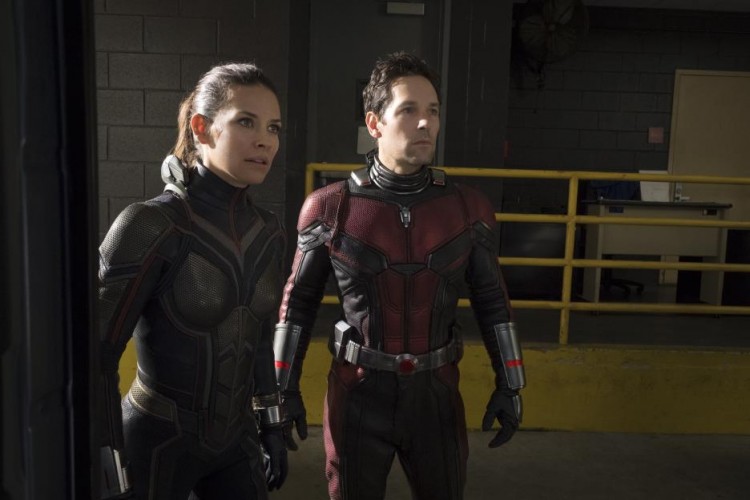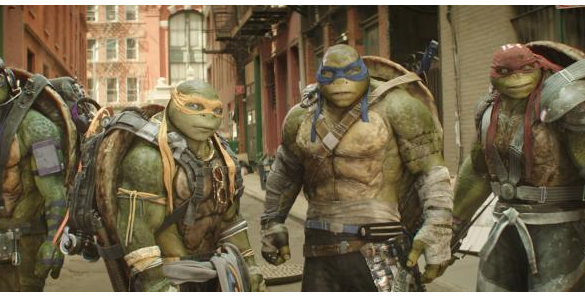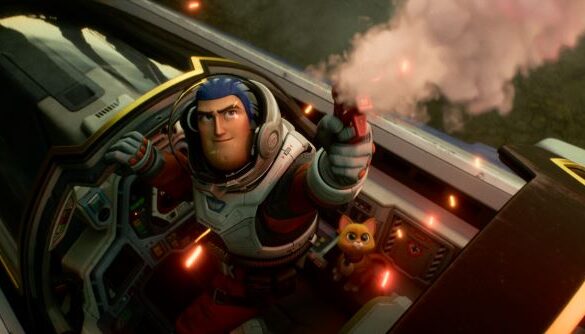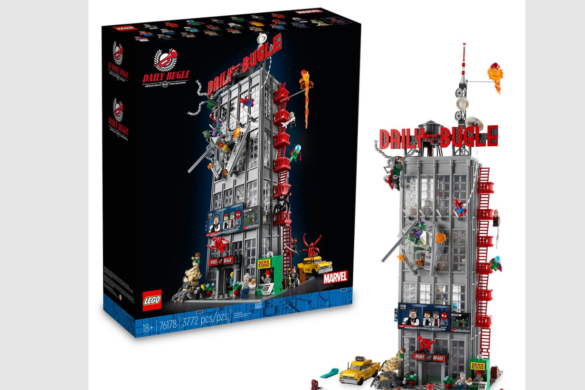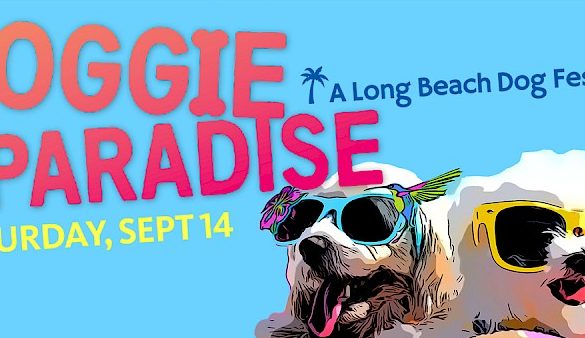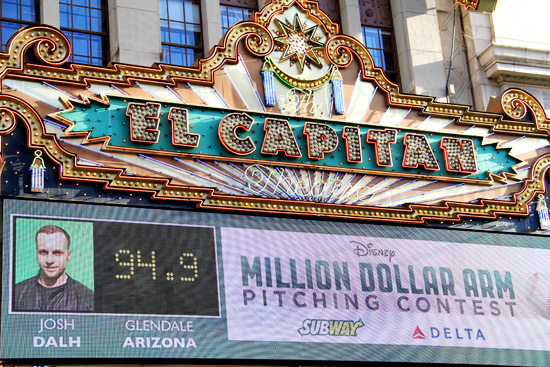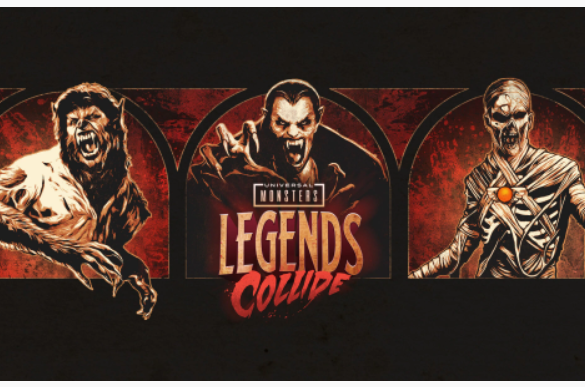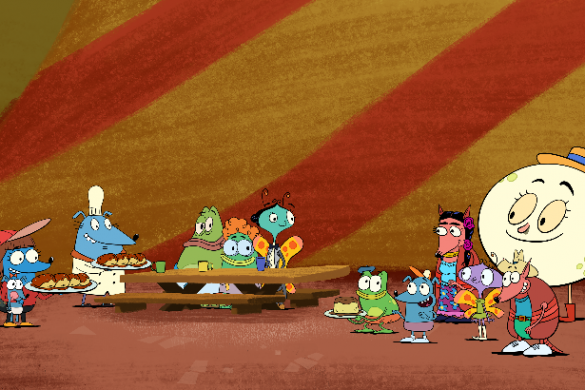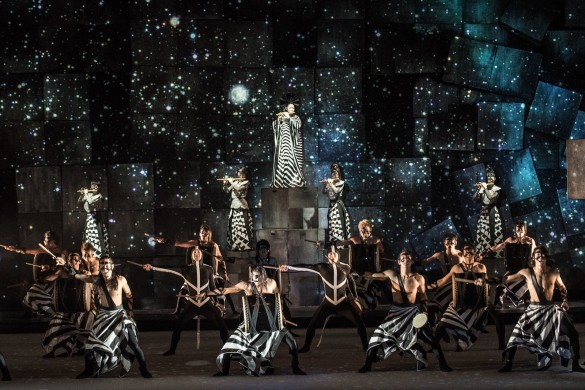Marvel Studios’ Ant-Man And The Wasp is now available on 4K, Blu-ray, DVD, and Digital. In the action-packed comedic sequel, Scott Lang struggles to find that balance between being a father and a superhero. He finds himself living under house arrest after assisting Steve Rogers in Captain America: Civil War. And when Hank Pym (Michael Douglas) and Hope Van Dyne (Evangeline Lilly) enter his life with a brand new mission to rescue Janet Van Dyne (Michelle Pfieffer), Scott discovers that there is more to being a superhero than just the superpowers and super suit. But when their new shifty phasing adversary Ghost arrives on the scene, it makes things more difficult for the heroic team and puts Janet’s rescue mission in jeopardy.
Now we could go about doing a review of the film on Blu-ray and also the bonus features, but instead, we pulled together some interesting things we learned from director Peyton Reed’s commentary. Now, there are a lot of things, so we only picked some of the most interesting tidbits from how the story was formulated, the chemistry, cast input, and technical aspects. So we intentionally left some things off of this list. So if you want to see everything, I suggest you watch Reed talk about all those things on the director’s commentary on Ant-Man And The Wasp.
1 – The prologue was originally intended to be used in the first Ant-Man. In it, we see a much younger Hank Pym (Michael Douglas) and Janet Van Dyne (Michelle Pfieffer) bidding farewell to their daughter hope, as they embark on a new mission to stop the Soviets from launching a missile.
2 – Here we learn that LOLA, a visual effects team, assisted in designing both Douglas and Pfieffer. Or as Reed puts it, the “Youngification.” It was important to establish an emotional connection and show the audience the original Ant-Man And The Wasp in their prime and see the fateful evening they are together for one final time.
3 – The flashback mission contains a combination of scenes from the first Ant-Man and new additional shots, but it comes from a more emotional point of view. Though we may only see the original Wasp’s eyes during this mission, Reed reveals that the eyes should look like Michelle Pfieffer. And this was long before the actress was cast in the role of Janet Van Dyne in Ant-Man And The Wasp. “Michelle was always my dream casting for that role,” Reed said. “And that was even before we knew we would be making a second movie.”
4 – While the spine of the film is about Ant-Man and The Wasp’s superhero partnership and if they will be able to function as a team, both professionally and personally. So that arc would come into play, as the two would start off estranged in the beginning.
5 – Ant-Man And The Wasp acts as a sequel to both Ant-Man and Captain America: Civil War, but Civil War was important because it sets up crucial plot points. One of them being that Scott Lang (Paul Rudd) is under house arrest for assisting Captain America with treason. There is an emotional piece to this as well, as Scott stole Hank’s suit and Hope feels betrayed.
6 – The opening scene with Scott also establishes how he is trying to be a good father to his daughter, Cassie, who loves him and idolizes him.
7 – Scott’s apartment is actually inspired by the apartments in San Francisco, CA. It was then rebuilt at Pinewood Studios in Atlanta, GA.
8 – Films like Midnight Run and After Hours served as an inspiration to the three days that remained on Scott’s house arrest.
9 – Reed loved The Partridge Family as a kid. As such, the use of The Partridge Family’s theme, “Come On, Get Happy” was the right tone for the movie.
10 – Scott’s vision introduces us to the idea of Quantum Entanglement. Because of that, he will be forced to contact Hank and Hope, which would finally bring them together since the Sokovia Accords were signed during Civil War. It is referred to as “The Psychic Breadcrumb” where they plant the seeds for the sequel in the first film. In it, you can briefly see a reflection in the Ant-Man helmet of something that resembles an angel or The Wasp, which hints at the encounter, which then goes back to the MCU theory of Quantum Entanglement.
11 – Disney And Marvel Studios asked for the rights to use one scene from Animal House where Pinto and Jennings are talking about how an entire universe could exist on a fingernail.
12 – Elmore Leonard novels also served as an inspiration for the crime aspects of the film where there are one antagonist and other level antagonists.
13 – The scene where Scott Lang wakes up in his bathrobe in Hope’s car is a nod to The Big Lebowski where he is yanked into this wild adventure.
14 – Reed made it a mandate to use photorealism. Just like the first film, the sequel is set in a real-world setting, everything has to look as photorealistic as possible. So if you are sitting in a coffee shop in San Francisco, and you see Giant Man stopping a flatbed truck, what would that look like?
15 – The Quantum Tunnel is the largest physical set built for a Marvel Studios movie. The inspiration for this came from the Irwin Allen show The Time Tunnel.
16 – There are giant household items that are spread out throughout the lab. Each has its own specific use, but they all have one thing in common, it is meant to throw the audience’s sense of scale off. So they wouldn’t know when they were small or when they were large.
17 – Reed used a lot more of the city of San Francisco in Ant-Man And The Wasp than he did in Ant-Man. He wanted the city to be a character in the movie and have sequences that were very specific to the city itself.
18 – It was important to make these action sequences fun and play around with the comedic vibe of both Ant-Man and The Wasp. So these action sequences come from character comedy and feel Buster Keaton-esque.
19 – While Ghost is an Iron Man villain, Reed wanted to do something different in Ant-Man And The Wasp rather than just have another villain like Yellow Jacket, who could shrink and grow. So the idea of phasing would be something formidable for the two titular heroes.
20 – Both Hannah John-Kamen and Randall Park’s characters, Ghost and Jimmy Woo, respectively, were reinvented for the tone of the film. Woo is a comedic foil for Scott, who is a straight-laced FBI agent but also someone who could be friends with Scott. Ghost is not a straight-up villain who is a gun for hire and anti-corporate vigilante as she was in the comics, Reed designed the character to be female so that it would fit into the theme of fathers and daughters.
21 – Ghost is considered to be more of an antagonist than a villain. And her affliction serves as a literal existential crisis as she may phase out of existence. So this forces her to make some immoral decisions that may help keep her solid and stay alive. Ghost’s motivation in this movie is to stay alive. Not some sort of world domination plans.
22 – Sins of the father also plays a theme into the film as Hank is forced to seek help from Bill Foster (Lawrence Fishburne) who is another one of Hank’s estranged partners. It is somewhat of a recurring theme for Hank who can be seen as an unreliable person whose relationships have ended up badly.
23 – Fishburne is a comics aficionado. Not only is he well-versed in both DC and Marvel, but he was often seen reading other obscure titles on set. Plus, Reed says he answered a lot of questions in regards to Apocalypse Now and The Matrix Trilogy. His character was also important as to having the same sort of gravitas as Hank Pym. Two well-regarded scientists who have loved ones and would do anything to protect them.
24 – Hank is given much more to do than just be walking exposition. He has more comedy and is even involved in some of the bigger action set pieces.
25 – The idea of the malfunctioning suit came from the fact that Ant-Man had already done shrinking in his first film and growing in Civil War. So they turned the comedy up a notch by having a suit that did not work properly when it needed to.
26 – The school heist scene had some of the most complicated visual effects in the entire film. They shot it at a real school in Georgia, but they have to figure out the mathematics of how small Scott had to be. Small tidbit, Reed pays homage to his teacher, whose name you can see as Scott and Hope enter Cassie’s classroom.
27 – It was really important to use motion control cameras, which happens to be an older piece of technology, in order to get the scale right.
28 – Ghost’s lair is an actual concert modernist building located in the suburbs of Atlanta, GA. And because of its unsettling Scooby Doo vibe, Reed toys with the fact that it looks and feels like a haunted house. He even added a wolf howl. Shepard Frankel rebuilt the interior of the building that would be Ghost’s lair on the Pinewood set.
29 – Reed used a camera set up called the Array, which is a five camera set up that would be used to capture all of Scott and Hope’s facial expressions as a small Ant-Man and The Wasp.
30 – There is built in additional photography so that it allows for both improv and rewriting on the film.
31 – Reed spoke with Rudd and Lilly about the importance of establishing the relationship between Scott and Hope, where Hope isn’t just the tough hero and Scott was the bumbling idiot. There had to be more nuance to that. So the whole idea of him being an everyman with a family gave that nuance, but it also made him question if he could carry the mantle of the Ant-Man and balance his duties as a father.
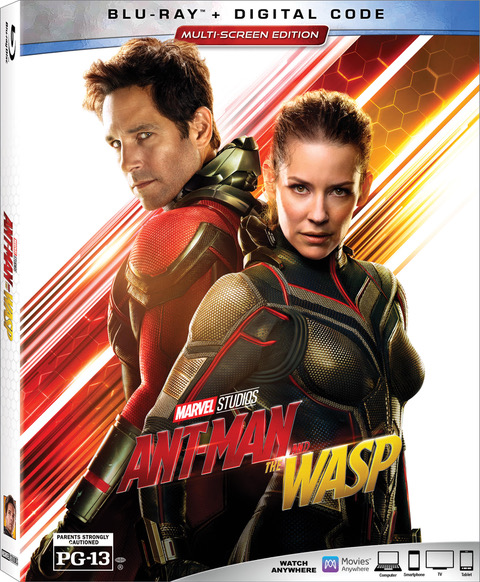
32 – Reed wanted to bring back the Luis’ tip scene from the first Ant-Man to Ant-Man And The Wasp, but he wanted to bring it back in a more organic way than just throw it in for the sake of it being in the film. So the writers hit on the idea that they could use truth serum on Luis as he and Kurt and Dave are tied up when Sonny Burch (Walton Goggins) is trying to find out where Ant-Man is. This also lets the main characters in on the fun.
33 – Ghost’s phasing visual effects was a result of a lot of visual effects R&D. The goal was to have something visually tie in with the quantum tunnel and the quantum realm and have a prismatic quality to it.
34 – Luis’ storytelling sequence is an effect of the truth serum is seen as a heightened and unreliable version of the events that happened as he recalls or how Scott told it to him. It is a result of a one-long day shoot of Pena just riffing. Reed would then go back into the cutting room to make a radio cut, which would then be played on speakers when it was time to have Rudd and Lilly lip- sync.
35 – Dramatizing the idea of Quantum Entanglement was actually inspired by the Steve Martin movie All Of Me. In it, Lilly Tomlin inhabits Martin’s body. While the film doesn’t quite go that far, it takes the concept of it and retrofits it for the film.
36 – In addition to the sets being a combination of practical and green screen, Reed says the Quantum Pod is practical. It takes inspiration from films like Fantastic Voyage, which also revolved around the idea of shrinking and growing.
37 – Another one of Reed’s mandates was to have Ant-Man And The Wasp under two hours because it was a comedy that was going to follow Avengers: Infinity War. So it was important for the post-production process to tighten and finessing the movie.
38 – In the comics, Cassie Lang grows up to be a hero in her own right, and while she has grown older in the three years since Ant-Man’s release, she definitely picks up some of Scott’s qualities. This makes her a perfect foil to Agent Woo when she has to lie to cover for her father Scott.
39 – There was a process of finding how to deal with Ghost and who she would be in the film. But in the end, it was decided that they would redeem her in the movie, which would also that her future could go in any sort of direction.
40 – Reed reminds us that there are a few callbacks Ant-Man And The Wasp makes to the first Ant-Man. And while those were fun, he says that he had to be careful not to retread on too much but also keeping the spirit of the character and the film alive. Ant-Man is so much more than shrinking and growing, he can also control ants, which is a crucial part of his powers.
41 – 75% of the film was shot in Atlanta, GA, and the rest of San Francisco was photographed and comped into the film with the help of the visual effects team.
42 – Reed and Rudd worked on giving Scott that balance of capable hero and being an affable everyman. They worked together to give him more comedy while also making him the same guy from the films.
43 – Lilly was a big part in shaping Hope to the character that you see in the film. She had an input in every detail from her character’s portrayal after fight scenes to the design of the suit. Example, Hope’s hair was in a practical ponytail because of Wasp’s helmet.
44 – During the Ant-Man outrunning Ghost Sequence, Reed reveals that Ghost was given a Terminator 2, T-1000-like quality in terms of nothing will get in her way as she phases easily through walls and other objects, while Scott has to run over, under, and find doors.
45 – The Ant-Man And The Wasp car chase sequence took inspiration from shows like Michael Douglas’ The Streets Of San Fransisco to films like Bullitt and What’s Up Doc? The film, What’s Up Doc?, is really a riff on Bullitt that takes place in San Francisco and is influenced by screwball comedies, silent movies, and Buster Keaton.
46 – Photorealism not only applied to the real world but also the fictional quantum realm. Not only was it tricky visual effects wise, but it was also tricky story wise as it would be cross-cutting between Hank rescuing Janet and the car chase sequence. So it had to feel like the same movie.
47 – The standard Stan Lee cameo was one of the first things that Reed had shot for the film. While it is something all Marvel fans look forward to in the films, Reed says there is an onus on all the Marvel Studio filmmakers to try and top all the other Stan Lee cameos from the other movies. It’s a very San Francisco specific joke, but it was also in a sense a good luck charm for Reed as Lee, who started it off.
48 – The car chase sequence is referred to as the “kitchen sink cut” because it literally has everything in it from shrinking and growing to phasing. So in order to the audience to stay engaged, Reed whittled some stuff down and took away some of the repetitive gags so that the audience would be surprised and be kept off balance.
49 – Reed has a very specific way of shooting an action comedy. For him, there is a right and a funny place for the camera to be. He doesn’t just set up six cameras and film and then fixes it in editorial. He says “the camera wants to be complicit in that action and the way that it is cut and the timing is crucial.”
50 – Luis’ car of choice during the chase is the Hyundai Veloster. And since he pulled it out of Hank Pym’s Hot Wheels Rally Car Case, it had to look like a 1970s Hot Wheels toy. So there are loud colors, flame decals, and it has to be chrome. “Just the most badass roadster you can imagine, Reed said.
51 – Wasp fight against Sonny Burch’s henchmen was influenced by The Raid 2. Obviously, it is much shorter and it has some Marvel touches to it.
52 – The largest Scott can grow into Giant-Man is 85 feet, and just like the comics, there is a limit to how long the body can sustain that size.
53 – In keeping with the photorealism, Reed made it a point for the visual effects team to give the Quantum Realm a colorful yet real and tactile feel. He didn’t want it to feel like a cartoon. So in doing their research, Reed and his team wondered what it would be like for a man to shrink down to a sub-atomic level and what kind of an effect it would have on him. Which is why you see him have a mental breakdown and see him hallucinate.
54 – While Pfieffer was Reed’s only choice for Janet, he was unsure if she would take on the role since she hadn’t been in a film like this for a long time. Since Batman Begins. However, in their discussions, Reed said they talked about who Janet was in the realm of Marvel Comics and that the character was on the cover of the first issue of Avengers. In fact, she is the one who named the team The Avengers. “She is an important legacy figure,” Reed says. They also discussed who the character was in the past and who has she become since she had been trapped in the MCU.
55 – Another thing that Reed set out to do in Ant-Man And The Wasp was tell a story about generational heroes. So we get to see older and younger versions of Ant-Man and The Wasp save the day.
56 – There were a couple of different versions of the climactic third act ending involving Ghost using the Quantum Tunnel to solidify her. According to Reed, there was an idea to bring out quantum creatures when the Quantum Tunnel opens and start taking over San Francisco. However, he was opposed to the idea because something like that had been done before. In addition, they did not have any footing to begin with. So the ending had to be about these characters and this split-second moment where everything happens at once.
57 – Pfieffer was also involved in creating the look of Janet. The long flowing grey hair is a bit of a nod to Jane Goodall. Her experience in the Quantum Realm has not only changed her, but it has also made her more evolved, and one that would seek a more peaceful resolution to the current situation than use violence.
58 – Ant-Man And The Wasp was shot on 2:40 aspect ratio as opposed to the traditional 1:85, which is what they did for the first movie. For Reed, it felt like a good progression so they could get out and see and feel the environment more than they did in the first movie.
59 – Since the film would take place after Avengers: Infinity War, Reed knew he would have to address what happened in that film in his own film. For him, seeing those global events happen on monitors was lazy. So they landed on a structure where they tied up all of the characters’ stories in this “too-neat resolution.” Basically, everyone has their happy ending. Of course, all to the tune of The Partridge Family’s “Come On, Get Happy.”
60 – The main-on-end title sequences was also somewhat of a challenge for Reed. MCU films are known to have them, some are more dramatically artsy than others. But one idea they had was to shoot is as a fake behind the scenes documentary which would show them shooting Ant-Man And The Wasp like a 50s Godzilla movie where people in suits were stomping on model cityscapes. But they settled on filming a sequence using action figures inside tabletop dioramas. This is something Reed did as a kid using Super 8 cameras.
61 – The tag scene was designed to hit audiences with as much random information as possible. Hank, Janet, Scott, and Hope are at an unknown location somewhere within the city. While it is not exactly clear what they are doing, aside from getting quantum healing particles to use on further healing Ghost, it does establish what the team has done since their clash with Ghost.
62 – While there were a number of ways they could have approached it, the ending you see was the one they decided to go with because it felt cheeky in terms of staying with the tone of Ant-Man And The Wasp while also providing a dramatic wallop the same way that Avengers: Infinity War did.

